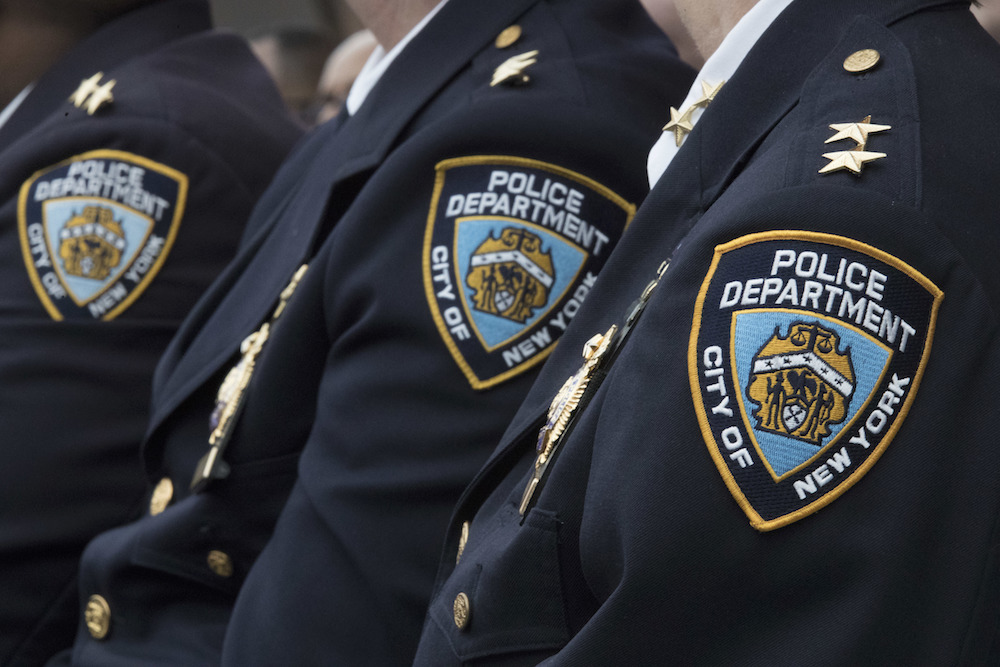The Third Circuit Court of Appeals ruled in favor of journalists and ordinary bystanders video recording police. The three-judges appellate panel ruled in the cases of a Temple University student, Richard Fields and Amanda Geraci, who was a member of a police watchdog group in Philadelphia called Up Against the Law.
It was a case that drew a “friend of the court” brief from The Reporters Committee for Freedom of the Press and was joined by 31 other media organizations including the National Press Photographers Association, Radio Television Digital News Association, The Associated Press, Gannett, McClatchy, NPR, The New York Times, The Online News Association and the Society of Professional Journalists. The groups argued that the right to video-record police in a public place is a First Amendment right. And if the police could stop a bystander from recording an officer in a public place, then police could stop journalists too.
The American Civil Liberties Union filed the lawsuits on behalf of Fields and Geraci. The U.S. District Judge Mark A. Kearney ruled that in order to be protected by the First Amendment the videographer had to announce that he or she was recording as an act of protest or challenge to police. The ACLU said sometimes it is not possible to know whether a recording will be useful until after the recording is over. So the ACLU appealed the lower court ruling.
“Government operates best in sunlight, and the police are not an exception,” Reggie Shuford, executive director of the ACLU of Pennsylvania, said on the ACLU website.
Mickey Osterreicher, a former photojournalist and now counsel for NPPA explained to Poynter why this decision is so important:
“The opinion in Fields by the Third Circuit adds to the growing number of U.S. Court of Appeals decisions affirming the First Amendment rights of citizens and journalists to photograph and record police performing their official duties in a public place, as being ‘clearly established.’ This is extremely important for a number of reasons,” he said.
“The Third Circuit was the only U.S. Court of Appeals that had held in a 2010 case (Kelly v. Borough of Carlisle), that ‘the claimed right was not clearly established.’ When police interfere with, harass or arrest people who are doing nothing more than photographing or recording while standing in a place where they have a legal right to be present (such as a public sidewalk or park), citizens and journalists may bring a federal civil rights lawsuit against the officers and the department for violating their constitutional rights. Police, in turn, then may assert the defense of ‘qualified immunity’ against such claims.”
Osterreicher explained why it helps to have more than one appellate court to agree that journalists have First Amendment right to record police:
“In order to overcome that ‘qualified immunity’ defense, plaintiffs must show that they were engaged in a constitutionally protected activity that was ‘clearly established’ at the time of the incident. The only way for that to be substantiated is for the U.S. Supreme Court, a U.S. Court of Appeals or a federal district court having jurisdiction over the area where the incident took place to have previously articulated that right as being clearly established beforehand so that any reasonable police officer would know that what they were doing was unconstitutional,” he said. “The Supreme Court has so far declined to hear such a case but every Circuit Court of Appeals to address this issue (First, Fifth, Seventh, Ninth, and Eleventh and now the Third,) has held that such a clearly established right exists. By those courts doing so, police in those jurisdictions may not successfully use qualified immunity in their defense.”
Osterreicher said at least once a week, and sometimes more often, he hears from a photojournalist or newsroom who police have ordered to stop recording. It’s a problem nationwide, he said, even in those jurisdictions where courts have already ruled in favor of constitutional protection for recording.
“When arrests occur, the charges are usually disorderly conduct, disturbing the peace, obstruction of governmental administration, loitering or some other discretionary charge because there are almost no circumstances under which photography or recording itself may be classified as a crime,” he said.
In their Amicus brief, the media organizations pointed out that recordings of police have become critical evidence in cases as far back at the Rodney King case in 1991 as well as more recent cases in South Carolina, Louisiana, New York, New Jersey, Minnesota and California.
The brief went on to point out how often bystanders record video that makes news: “With the ubiquity of mobile phones that contain high-tech cameras, video content generated by witnesses and bystanders has become a common component of news programming. A 2014 study of eight international 24-hour news channels found that ‘an average of 11 pieces of [user-generated content] were used every day on television by [the] news organizations [studied].’ Another study of eight popular news websites uncovered that the sites collectively used 237 items of citizen-created video per day, with The New York Times using on average 20 pieces per day.”
I asked Osterreicher what advice he gives to photojournalists when police attempt to stop them from recording:
A police officer may not tell you to stop photographing or recording if you are in a public place where you have a legal right to be present but that does not mean that they will not still do so. That is because the right to photograph and record is a First Amendment protected activity which may only be limited by reasonable time, place and manner restrictions. The most common of those restrictions are location. If a police officer orders you to move it is advisable to comply with the request. How far you move is something that you will have to decide for yourself. If you believe that the order is not a reasonable one, ask to speak to a supervisor or the public information officer if that is possible. It is important to be very aware that most police officers do not like to be questioned or challenged once they have told you to do (or not do) something and a mere hesitation, question or request may result in your detention or arrest. Only you can make that judgment call as to what to do. Whatever you do remain polite and professional and keep recording as it may be the only evidence to support your claim if you are arrested. If possible work in pairs so that of you are unable to record your partner can.
Police may only seize your images and/or recording device (cell phone, camera, etc.) only under certain conditions known as ‘exigent circumstances.’ If they do so without satisfying the exigent circumstances requirements they may also have violated your civil rights against unreasonable search and seizure protected under the Fourth Amendment and due process rights protected by the Fourteenth Amendment.
Those requirements are:
- Officers must have probable cause to believe that a serious crime has been committed
- Officers must have a good faith belief that there is evidence of that serious crime on the device
- Officers must have a good faith belief that absent seizure such evidence will be lost or destroyed
All three prongs must be met and many departments require that a supervisory officer is called before such a seizure takes place. Many departments also have policies that distinguish between seizures of evidence from journalists and citizens. Even after such a seizure, those images may not be viewed without your voluntary consent or subject to a court order.
Also remember that according to the U.S. Department of Justice guidelines: ‘under the First Amendment, there are no circumstances under which the contents of a camera or recording device should be deleted or destroyed.’







